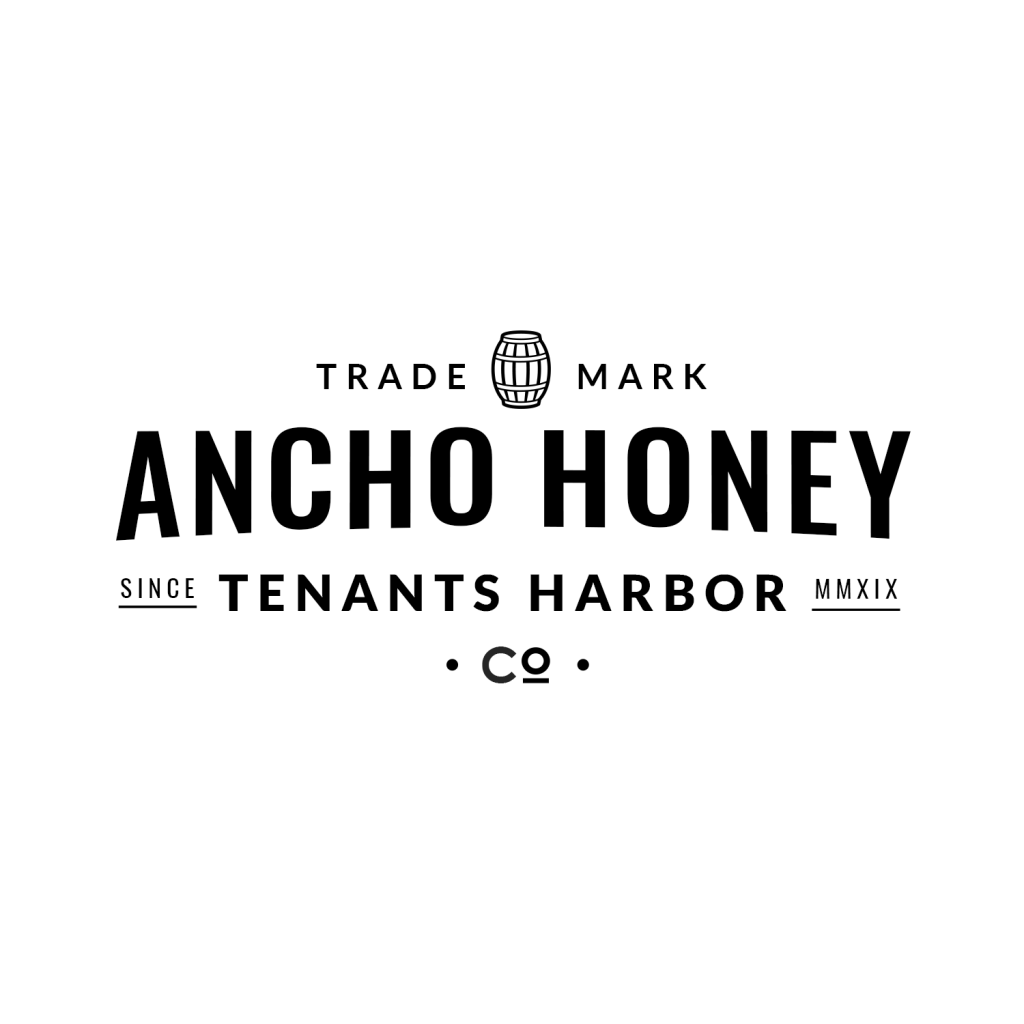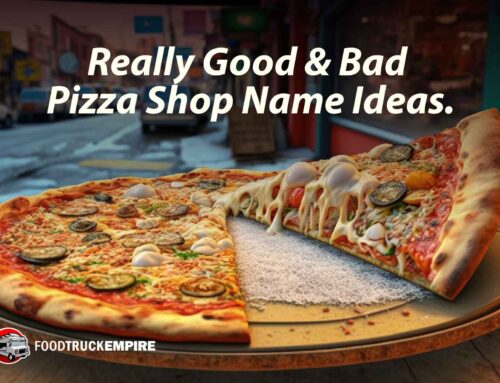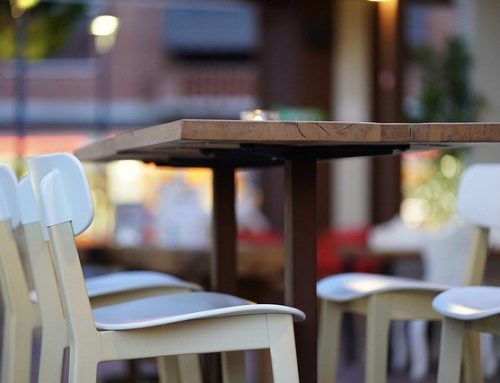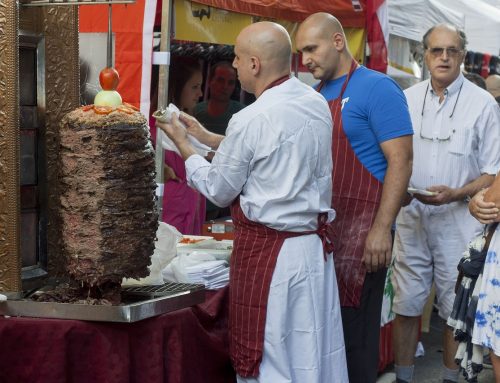The dream almost always starts with a logo. Long before many of us start hammering out the specifics of a business plan, doing market and demographic research on the town in which we plan to open our business, or figuring out where we’re going to raise the capital we need to get the doors open, we start dreaming up logo ideas.
Developing a logo for your big idea is an important part of the planning process. The right logo will accomplish several tasks at once: It will make your business immediately identifiable, will help your new brand stand out from the crowd, and, if you do it right, lend an air of credibility to your new venture (even, perhaps, before you’ve earned it).
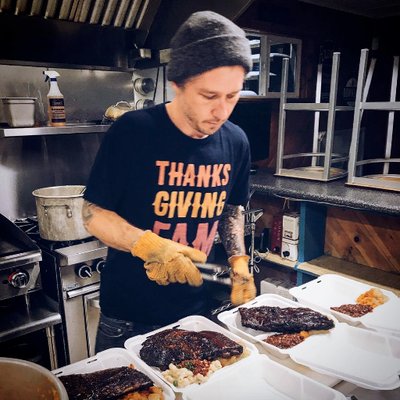
Me plating some take-out BBQ.
Some online small business guides will urge you not to start daydreaming about logo designs until you’re well into the planning stages of your new business idea, insisting that until you secure financing or have a rock-solid menu, there’s no point in noodling around frivolously with logo concepts. But honestly, we think that roughing out some logo ideas is an important part of the process; shaping the look and feel of a logo helps you define (even if only mentally, at first) what your new business will look and feel like. Sometimes, a logo can help define a concept, instead of the other way around.
In my previous, pre-kitchen life, I spent a few years pursuing a career as a graphic designer, which gave me a pretty basic grasp of some overall design concepts. But what if you can’t draw even a stick figure, don’t know your way around complicated design programs, and don’t know your rasters from your vectors? It doesn’t matter. You, too can develop a killer logo for your new restaurant. Here are a few pointers.
Look at both your local competitors, and the big brands, to develop an overall “feel” for your logo.
Restaurant logos tend to fit into a few main categories, and choosing the right one will depend a lot on the overall mood you are trying to convey in your new space. Some businesses will want to focus on the rustic, home-grown aspects of their cuisine, making a more organic, handmade logo appropriate. A high-tech sushi restaurant with automated ordering kiosks may opt for something more modern. An old-timey soda shop that specializes in milkshakes and patty melts may go for a retro-inspired look.
Related Reading: 6 Things that Stress Me Out as a Restaurant Owner
Figure out which one of these major themes you want to embrace for your new restaurant, and then start doing some research, both at the local level and at the larger, national brands. Chances are, someone else has already nailed the concept you are looking for, and you can start to build a collection of logos you love to help inspire ways to fit your new business into that theme.
Figure out all of the things you need your new logo to do.
When I developed the logo for Ancho Honey, I tried to keep a few things in mind. First, the logo had to fit in with the established atmosphere of the neighborhood, a mostly residential coastal town in New England. This probably meant that my first idea, a vintage screeching black cat with lightning bolts, probably wasn’t going to be the best fit.

Sure, it’s cool…but the neighbors are gonna hate it.
But my logo also had to pull a few different duties. I also planned to open a small retail section with house-branded foods, which meant my logo had to look good (even rendered at small sizes) on food jars and labels. It needed to work for any merchandise ideas I came up with, and it had to be strong on a business card. That one little logo had a few different big jobs to do, which is what ultimately led me to something simple, clean, and with lots of potential for being used in different ways:
Browse the online stock illustration websites for inspiration (or even a ready-made logo).
There are dozens of amazing stock photo and illustration websites out there that specialize in providing inexpensive stock for businesses just like yours, including Creative Market and Graphic River (among others). A quick search for “restaurant logo” will bring up thousands of results, all of varying quality.
In a pinch, you can even purchase one of these logos to use as-is for your new business, though we tend to caution against this, since you may run into licensing and copyright issues down the road, if your new business becomes wildly successful. Even without making a purchase, browsing these designs can help you identify a “look and feel” for your new restaurant, and get the creative juices flowing.
Start with a blank file, and don’t reject any idea.
Once you have an overall theme in mind, it’s time to open up some kind of graphic editing program, to start to rough out some ideas. You don’t need high-end software; anything that will move some pixels around is a fine place to start. Consult your collection of logos you love, and try to identify some common themes that make those logos feel the way they do; an outlined bit of text here, a dropshadow there. Type the name of your restaurant using a few different free fonts (which are usually helpfully arranged in categories that will match the feel you’re going for), to start to identify a “mood” that fits your new establishment.
Don’t worry so much about incorporating pictures or graphics at this stage; the right typeface will do plenty to help move the process along. Most importantly, keep everything, and don’t be hard on yourself; don’t reject and erase an idea, just because you don’t love it at first glance. Logo design is done in iterations, and often, an idea you may have initially rejected can give birth to new ideas or tweaks that make it work.
Reach out for help when you need it.
Once you have a few different options that all “feel” the way you want them to, reach out to a professional for help, if you need it. A quick consultation with your local sign shop or that one girl you went to college with who’s now an award-winning designer, can help transform your rough idea into something more polished. Designers work most efficiently when they have a sense of what you’re looking for, and your rough concepts will be a huge help to them as they help refine your brand.
There are a ton of good websites like Fiverr.com where you can pay a designer $50 or less to come up with a logo. The skill of these designers are better than you might think too! Find someone with a lot of good reviewer with a body of work that you like and outsource your branding work.
Don’t be afraid to change course.
Sometimes, you think you’ve nailed it, and you haven’t. And that’s okay. When I ran the crowdfunding campaign for my food truck, ‘Wich, Please, I thought I had the logo all sewn up. The more I looked at it and “lived” with it, though, the less good I felt about it. Here, let’s take a look:
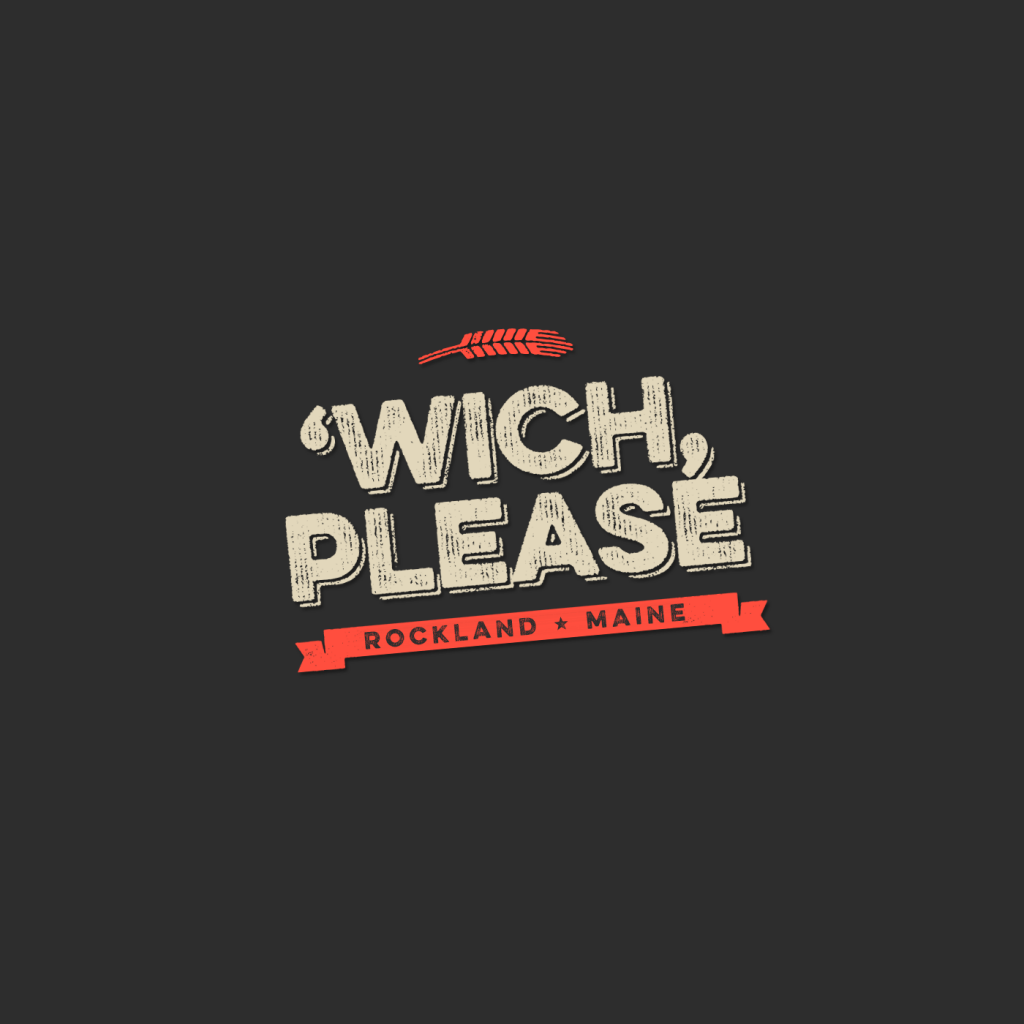
Wheat??
The original logo had sort of a vintage vibe, with distressed lettering that looked like it could have been hand-rendered. I knew I wanted to feature the name of my town prominently, and the banner and colors were close to what I had in mind. But the overall “feel” wasn’t right; the logo felt too handmade and rustic, when what I wanted to convey was a sense of confidence and establishment. And what was with that strand of wheat? What was I, a craft beer brewer?
After my crowdfunding run, I decided to revisit the logo, to better communicate the mood I was trying to create. Since the name of my business was based on a bit of an off-color pun, and since I’ve always been fascinated with 1970s network television like “Three’s Company” and “Good Times,” I decided to try and emulate the feel that the logos for those shows had; I needed a logo that was fun, that didn’t take itself seriously, but that seemed polished and, well, like a real thing. Here’s the revised version of my food truck logo, which I think ticks all of those boxes:
Consider whether or not your restaurant really needs a mascot.
We can all look around our neighborhoods and point to some truly hideous examples of bad logo design. And often, what all of these terrible logos have in common is a truly reckless use of mascot design or illustration, most of which are entirely unneccesary.
Think about it: Does “Pho Sizzle,” your new Vietnamese pho truck, REALLY need an anthropomorphized, dancing bowl of soup on the logo, in order to get your message across? Does your new hip burger joint really benefit from having a picture of a burger incorporated into the logo? Most of the time, the answer to this question is “no.”
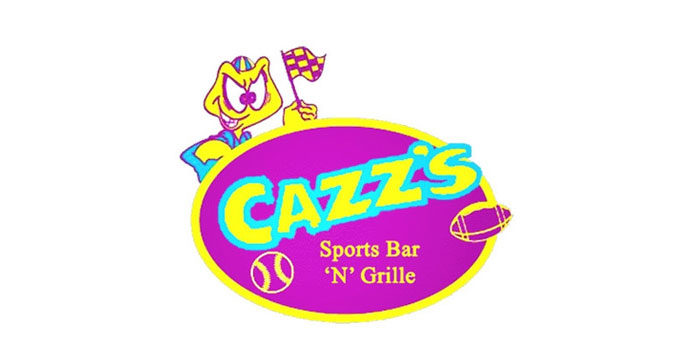
Don’t do this.
Look, don’t get me wrong: Illustration can be a great part of a logo design, when it’s done excruciatingly well by professionals, who craft perfectly balanced renderings of your signature dish and incorporate them into a polished logo that makes sense.
But that piece of clipart that came bundled with your copy of Microsoft Word is probably not going to make a strong impression on your customers.
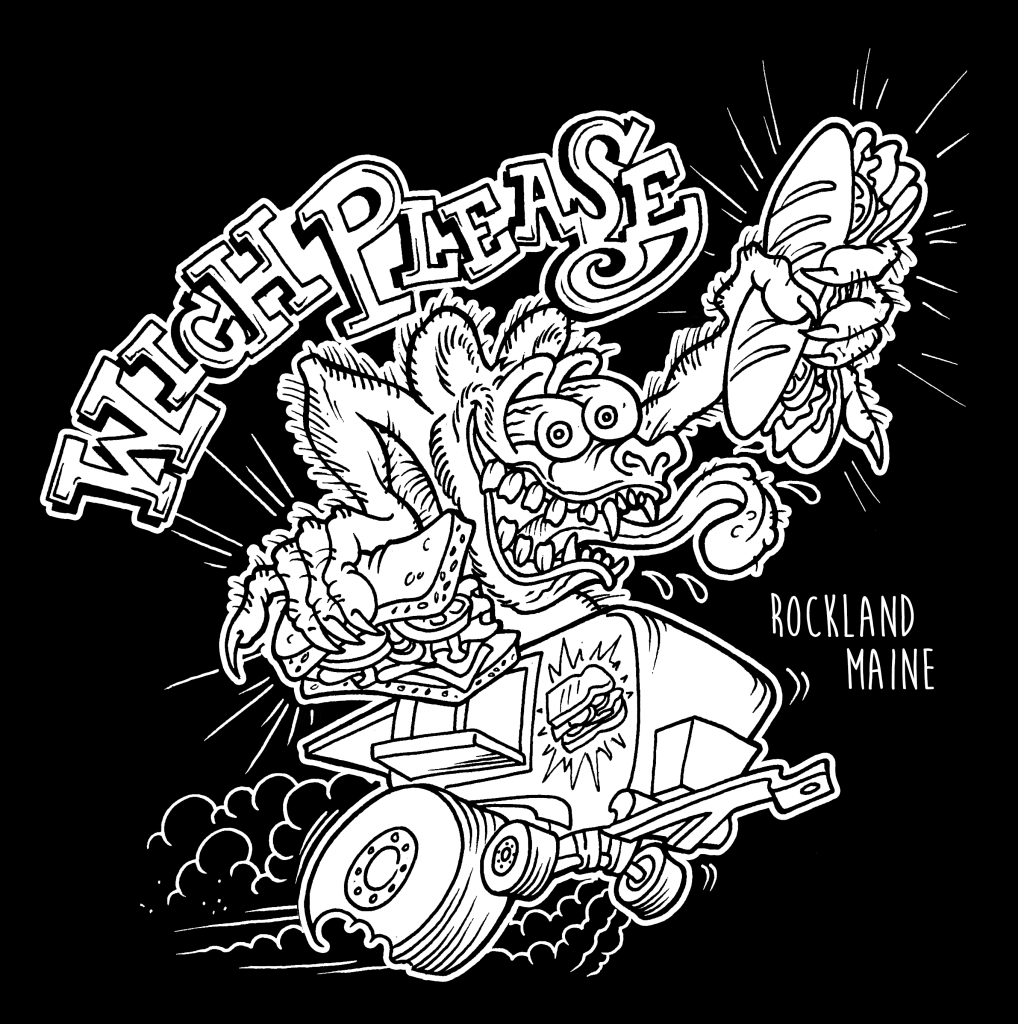
I love this mascot, illustrated by a tattoo artist friend of mine. But’s it’s probably better suited for a t-shirt, than the official logo.
When all else fails: Type is still king.
As I look back through some of my favorite logo designs, they all have one thing in common: They’re mostly composed entirely of type.
If you’re beating your head against your keyboard, trying to come up with a more fanciful design, take a big step back, and try something super-simple.
Some of the strongest logos in the world are made up of nothing more than the name of the business, rendered elegantly in a simple typeface. Look:
No dropshadows. No explosions. No nonsense. When you want to quickly put together a polished, professional-looking logo for your new business, simpler is usually better.
Thinking about starting your own restaurant? I don’t just write about restaurants for fun, I own one too. Learn how I got started here.

